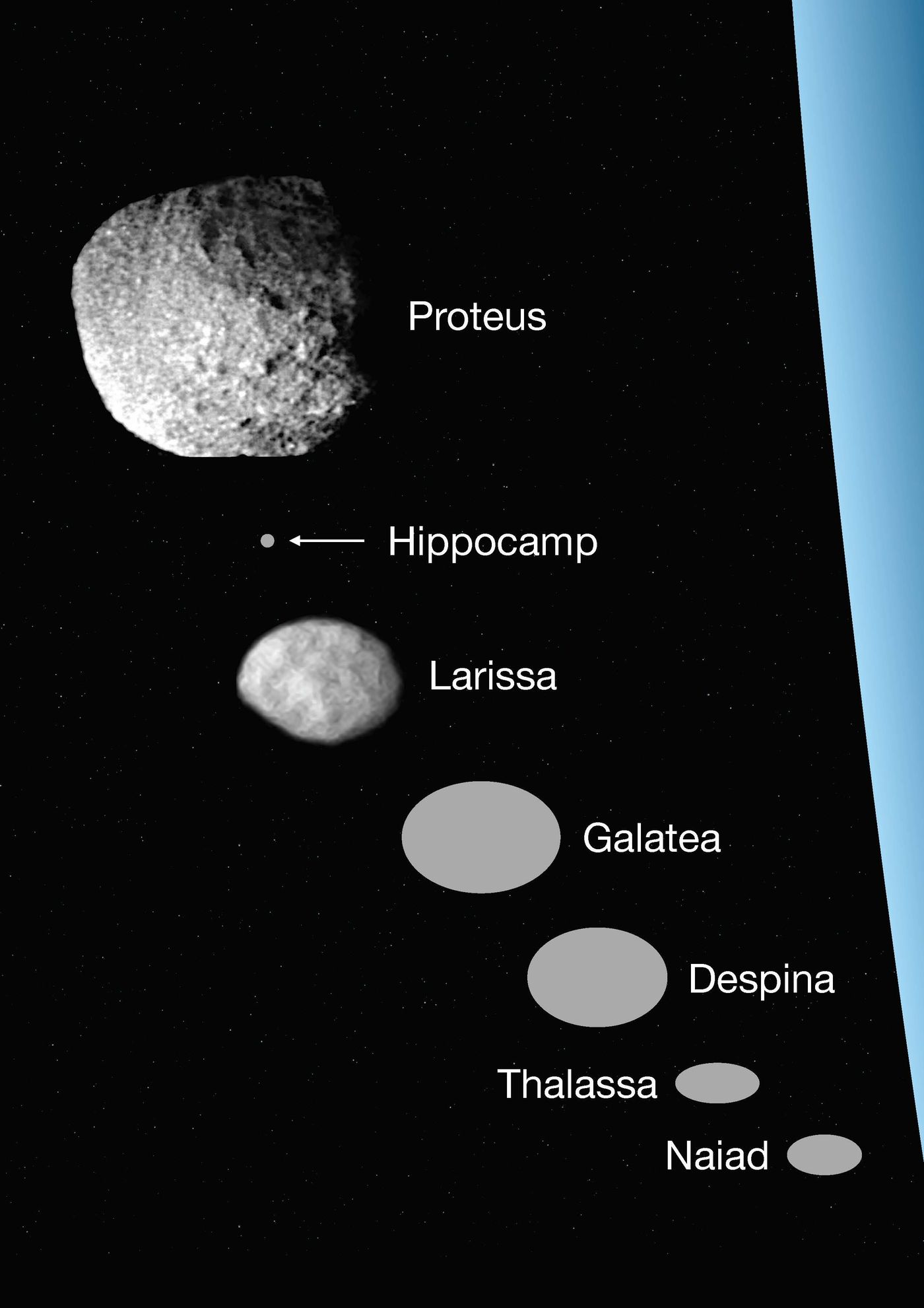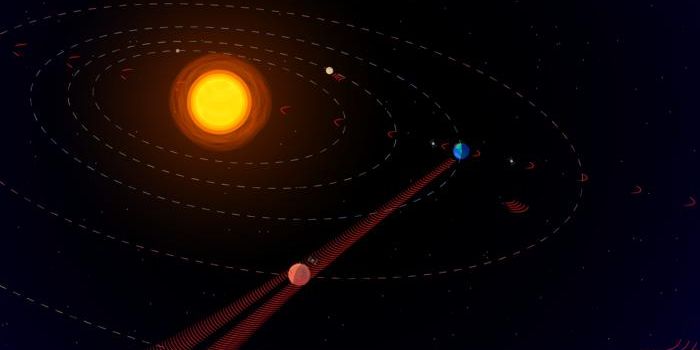Astronomers Discover Another Moon Orbiting Neptune
Our home planet of Earth only sports a single natural satellite that we subtly refer to as the ‘Moon.’ On the other hand, it’s evident that most of the other planets in our stellar neighborhood have a multitude – sometimes dozens – of moons.
Unsurprisingly, the solar system’s largest gas giants (Jupiter and Saturn) exhibit the highest number of confirmed moons at 79 and 62 respectively. With that in mind, it shouldn’t come off as too astonishing that Neptune has a somewhat stout lunar roster of its own.
Image Credit: Mark R. Showalter, SETI Institute
Previously cited to have 13 natural satellites, Neptune’s count has been formally increased to 14 this week after astronomers confirmed the existence of another inner moon orbiting the distant, chilly world; they’ve since named the new moon Hippocamp and their findings have been published this week in the journal Nature.
Related: Astronomers find 12 more moons orbiting Jupiter
Astronomer Mark Showalter of the SETI Institute happened upon Hippocamp entirely by accident while studying Neptune’s rings with the Hubble Space Telescope back in 2013; unfortunately, not enough was known about the body at the time, so Showalter and colleagues continued their observations under the radar to learn more about it. Fast-forward to today, and it would now seem that Showalter and his team have successfully identified Hippocamp’s orbital path around Neptune and uncovered potential clues regarding where it came from.
Image Credit: Mark R. Showalter, SETI Institute
Hippocamp measures just 21 miles in diameter, making it incredibly small when compared with Neptune’s other inner moons. In fact, it’s almost a miracle that Showalter could even discern such a tiny object given just how far away Neptune is from Earth. The peculiar circumstances drove the astronomers to dig deeper, and that’s when it struck them.
Hippocamp’s orbit around Neptune closely follows that of Proteus – the planet’s largest and outermost inner moon – which measures approximately 130 miles in diameter. The two moons orbit Neptune at just 7,500 miles apart, and the astronomers note that their obvious size difference and proximity to one another have implications for Hippocamp’s origins:
“Our results suggest that Hippocamp is probably an ancient fragment of Proteus, providing further support for the hypothesis that the inner Neptune system has been shaped by numerous impacts,” the astronomers wrote.
As it would seem, the most likely explanation for Hippocamp’s existence is that something slammed into Proteus’ surface, sending space rock fragments into space that later clumped together to form the tiny object we see today. Of course, this is only a theory, and there's certainly a lot of wiggle room for interpretation.
Related: Here's why it's a good thing that Earth only has one moon
Showalter and colleagues believe that there could be other small moons just like Hippocamp in orbit around Neptune that have not yet been discovered. Unfortunately, Neptune’s distance from Earth makes it challenging to study with observatories like the Hubble Space Telescope, and Neptune isn’t teeming with space missions like other planets are, so our understanding of the distant world is indeed limited.
With a little luck, perhaps NASA will recognize that Neptune has long slipped under the radar and consider sending a spacecraft there to study the planet up close. Only then, the researchers say, will we get a better idea of the number of objects that orbit the planet and their distinctive properties.










